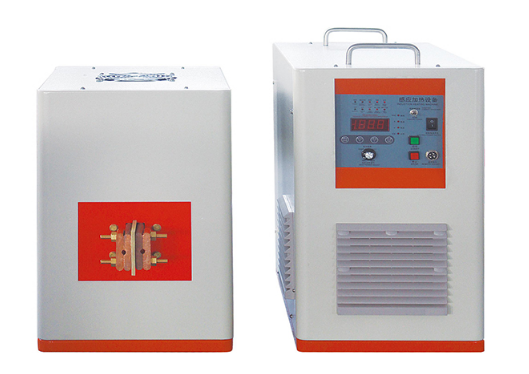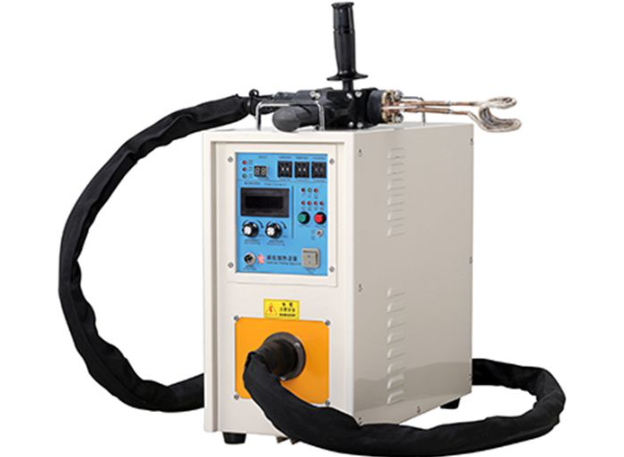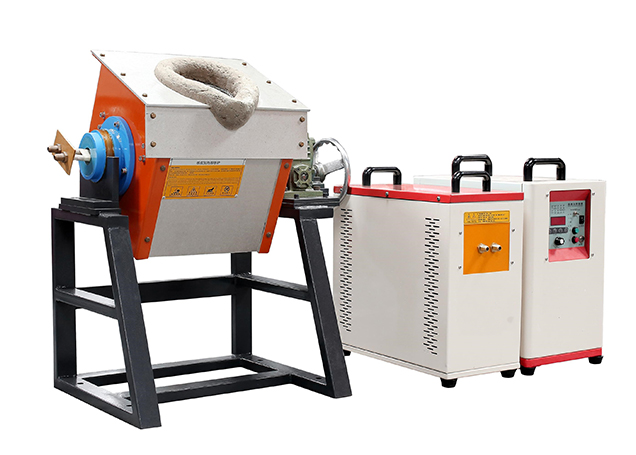Induction forging is a process that uses an induction heating system to preheat metals, which are then shaped using a hammer or press. This technique has a wide range of applications, but before evaluating its potential uses, it’s important to first understand the process. Let’s explore it in more detail.
PRINCIPAL PROCESS
Induction heating is a non-contact method that leverages the principles of electromagnetic induction to generate heat efficiently. When a material is placed in a strong alternating magnetic field, electric current flows through it, resulting in Joule heating. In magnetic materials, additional heat is produced below the Curie Point, which is the temperature at which certain magnetic materials experience a significant change in their magnetic properties. For instance, the Curie point of iron is 1,418 degrees Fahrenheit (770 degrees Celsius).
The depth of the induced current is influenced by both the frequency of the alternating field and the material's permeability. Materials with high permeability (ranging from 100 to 500) are more easily heated through induction. Iron and its alloys are particularly responsive to this heating method due to their ferromagnetic characteristics.

CONSUMPTION OF POWER
Before getting started with your own applications for induction forging, you need to understand the power that it requires. The power supplies needed for induction forging can vary greatly, from just a few kilowatts to multiple megawatts. The component geometry can also dictate power supply frequency, which can vary from about 50 Hz to 200 kHz. Keep in mind that most applications for induction forging use a range of between 1 kHz and 100 kHz.
Choosing the right power for your induction forging application involves calculating the thermal energy required to elevate the selected material to the desired temperature within a specified timeframe. Once you determine this energy requirement, you must also consider additional factors, including radiated losses, coil losses, and other system losses.
OUTPUT FREQUENCY AND POWER SOURCE
Once you’ve determined the necessary power consumption for an induction forging application, the next important factor to consider is the output frequency of the power source. While heat is primarily generated at the surface of the component, it’s essential to select a frequency that provides the optimal and most effective penetration depth into the workpiece. Keep in mind that heat takes time to reach the center of the material. Additionally, applying too much heat or power too quickly can result in melting the surface of the workpiece while the core remains cool.
BENEFITS
The three primary benefits of induction forging are rapid heating cycles, precise heating patterns, and relatively cool and stable cores. In addition to these advantages, induction forging is a highly controlled and calculated process. Unlike traditional heating systems, such as gas furnaces, which require preheating and shutdown, induction forging allows for immediate heat availability. If a production interruption occurs, the power can be quickly turned off, preventing unnecessary energy loss.
Induction forging is also an energy-efficient method, as heat is generated within the component rather than around it. This localized heating enhances the efficiency of heat and energy transfer, ensuring that only the workpiece is heated, not the surrounding atmosphere.
Ultimately, understanding the processes and benefits of induction heating and forging is crucial for evaluating whether this technique is suitable for your needs.
ADDITIONAL BENEFITS
While we’ve already highlighted the controllability and energy efficiency of the induction forging process, there are many additional benefits that are often overlooked. Notably, induction forging does not produce harmful or toxic byproducts upon completion, making it a completely clean process that contributes no environmental waste. There are no smoke or toxins generated during induction forging.
Moreover, a key aspect of how forging works lies in the consistency of its results. The highly controllable nature of the process allows for easy and rapid repetition with minimal variation in outcomes. This predictability eliminates guesswork, resulting in uniform results that can help reduce or eliminate the need for post-forging machining.
Additionally, induction forging facilitates rapid temperature increases, ensuring that each component reaches its required temperature quickly and efficiently. This efficiency minimizes scale formation and reduces the likelihood of surface defects in the finished material.
BAR END HEATING
Bar end heating is a forging technique that focuses on heating only a portion of the bar. This method is commonly used for applications such as hot forging of bolts and certain mining tools. For instance, the end of a bar may be heated and then forged to create a large fastener. Bar end heating shares many similarities with induction forging.
The efficiency of an induction heating system for a specific application depends on four key factors: the characteristics of the part, the design of the coil, the capacity of the power supply, and the degree of temperature change required. By thoroughly understanding the detailed processes of induction forging, you can better assess whether your business can benefit from using induction heating equipment.








